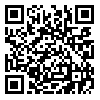Volume 18, Issue 3 (2016)
JAST 2016, 18(3): 615-627 |
Back to browse issues page
Download citation:
BibTeX | RIS | EndNote | Medlars | ProCite | Reference Manager | RefWorks
Send citation to:



BibTeX | RIS | EndNote | Medlars | ProCite | Reference Manager | RefWorks
Send citation to:
Kiani H, Hojjatoleslamy M, Mousavi S M. Data Reduction of a Numerically Simulated Sugar Extraction Process in Counter-current Flow Horizontal Extractors. JAST 2016; 18 (3) :615-627
URL: http://jast.modares.ac.ir/article-23-5629-en.html
URL: http://jast.modares.ac.ir/article-23-5629-en.html
1- Bioprocessing and Biodetection Lab, Department of Food Science, Technology and Engineering, University of Tehran, Islamic Republic of Iran.
2- Department of Food Science and Technology, College of Agriculture, Islamic Azad University, Shahre Kord Branch, Shahre Kord, Islamic Republic of Iran.
2- Department of Food Science and Technology, College of Agriculture, Islamic Azad University, Shahre Kord Branch, Shahre Kord, Islamic Republic of Iran.
Abstract: (7948 Views)
In this work, Response Surface Methodology (RSM) and Artificial Neural Networks (ANN) were employed for the data reduction of a numerically simulated extraction process of sugar in an industrial RT2 extractor. The numerical model developed in OpenFOAM library was first validated using actual plant data and its stability and sensitivity to the processing variables was tested. Then, the model was used to generate data of juice and pulp sugar concentrations as affected by the main processing parameters including draft, Silin number, and capacity. The data were modelled using RSM and ANN. Both RSM and ANN were able to predict the data accurately, however, R2 values obtained for ANN were slightly higher. Since the numerical model can be time consuming to be solved for all data ranges, the regression equation obtained by the RSM method or the network created according to the ANN model can be utilized as fast and ready to use tools to optimize the extractor.
Article Type: Research Paper |
Subject:
Food Science and Technology
Received: 2014/09/9 | Accepted: 2016/05/1 | Published: 2016/05/3
Received: 2014/09/9 | Accepted: 2016/05/1 | Published: 2016/05/3
| Rights and permissions | |
 |
This work is licensed under a Creative Commons Attribution-NonCommercial 4.0 International License. |







